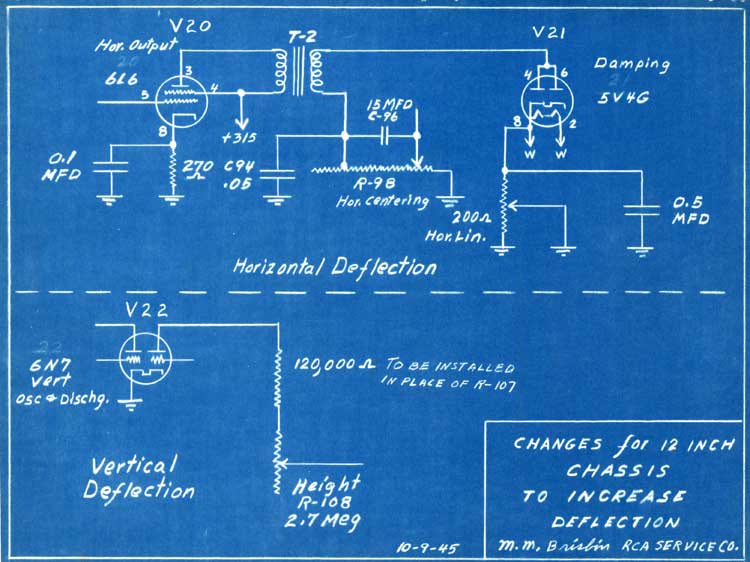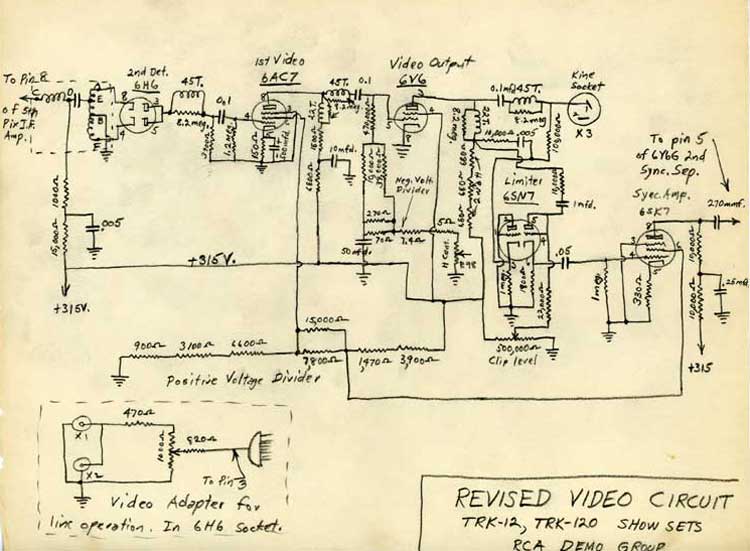Early Electronic Television RCA TRK-12/120 Video and Sweep ModificationsA 1939 magazine shows a fifth chassis in a TRK-12. Here is a comment about the video modifications from Eric Kinast:
Dave Sica sent us these schematic diagrams of modifications to RCA TRK-12/120 sets for a demonstration of some sort. They are dated 1945. The deflection circuit adds a bypass capacitor on the cathode of the horizontal output tube, and adds a horizontal linearity control. It reduces the value of the series resistor in the plate of the vertical output tube. These changes would increase the sweep energy, which would be required with a higher anode voltage. The video circuit modification is more extensive. The small diagram at the lower left is to feed the set with a video input. The main schematic is completely different from the original TRK-12. It uses two tubes as video amps, and changes the sync separator design. There is no AGC, and the contrast control adjusts the bias voltage on the IF stages. The video modifications are probably to get more voltage swing at the grid of the CRT. The 12AP4 data sheet says that the control grid needs 0-25 volts for "good contrast and brightness", and 0-50 volts for "maximum contrast and brightness".
Courtesy of Dave Sica |


